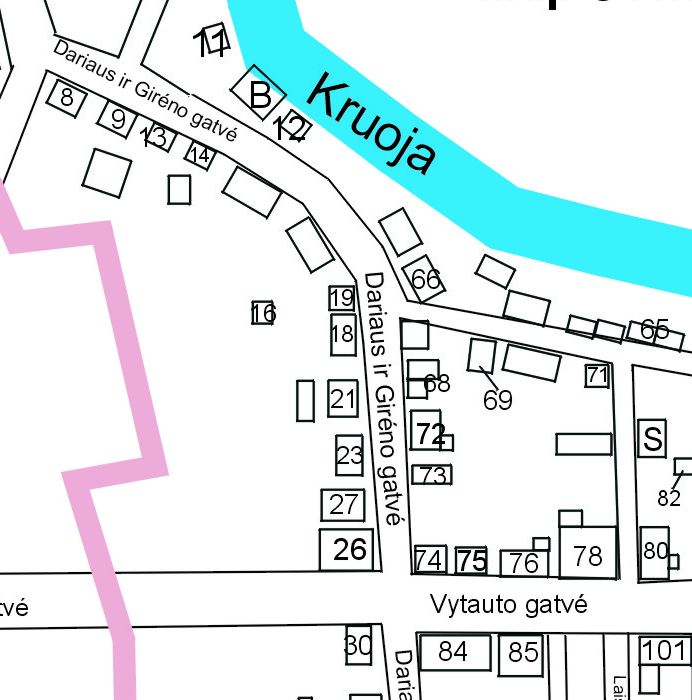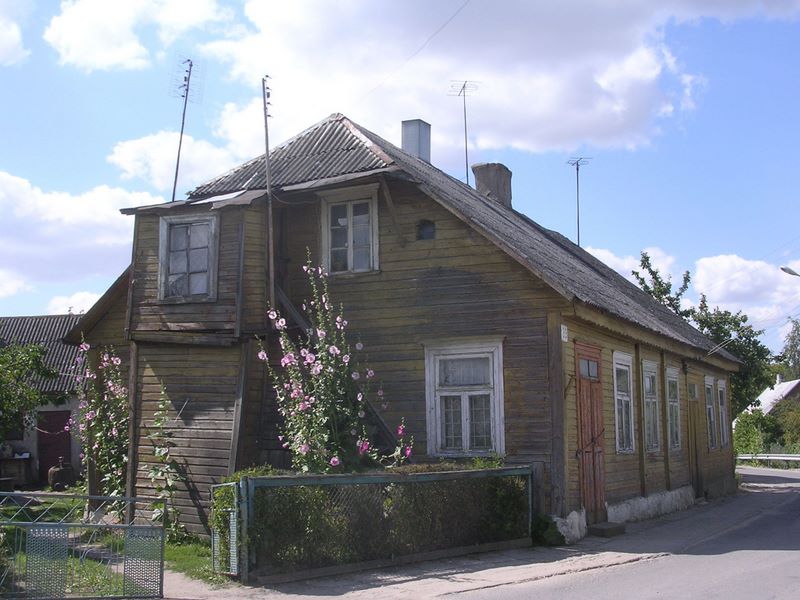| detail map 2:
|
|||
|
We continue following the
Darius ir Girėno gatvė street and see on our
left
House 12. |
|||
| We look at our right and we see:
|
|||
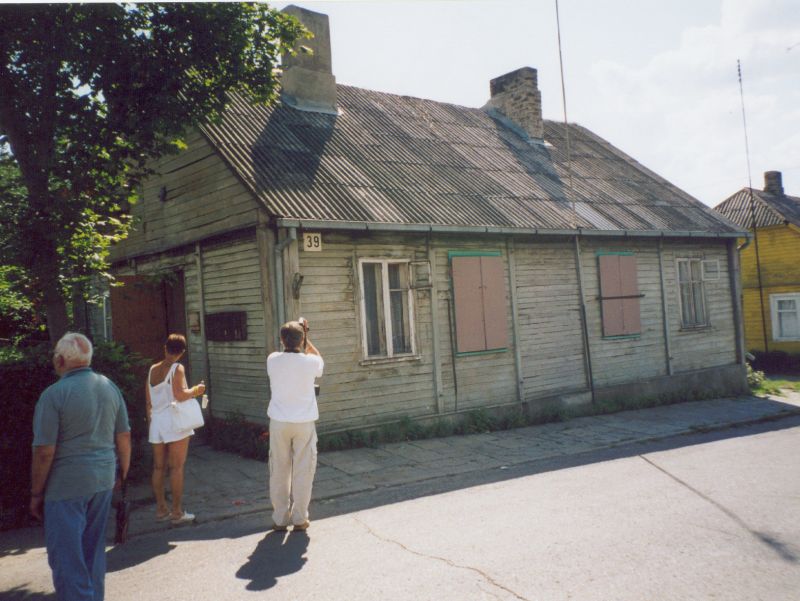 |
house 13; here lived
Judelis Maktusas
(=
Judele Maktus) On his small piece of ground there were two houses: one for him and one for his wife. She ran a small shop, selling e.g. herrings, honey and sugar. She kept a goat. |
||
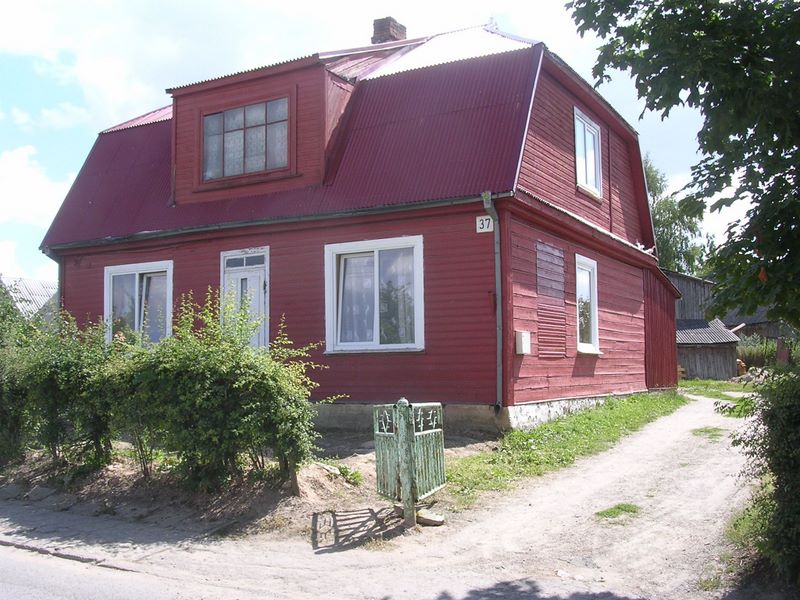 |
house 14;here lived Irsji
Sjenkman
(= Šinkmanas Iošas
= Josas Senkmanas)
He and his wife had two sons. They lived in a wooden house. Irsji Sjenkman had a chalk factory and sold grit from the Italian Dolomites. |
||
|
|
Irsji Sjenkman, 1930’s | ||
|
At nr. 16 lived Tevys Kanas (Tevya
Kagan) who was married to Sheina
(Cheyna)Sherman.
Tevya and his wife Sheina
rented a room to the teacher in Hebrew, called
Wallerstein. Tevya was a roofer and his wife Sheina was a seamstress. The mother of Tevya lived with them, her name was Nechama and she kept a small grocery. Actually, the house was divided into some rooms and a small store. The house had belonged to Minaida Sherman who was, after the first years of her marriage, already a widow . Minaida Sherman died before the massacre. Minaida and her husband Shalom had four children: three daughters and one son. The names of the daughters were: Sheina, Sorka and Rochka. ( as profession: all were seamstresses). The name of the son was Orka who emigrated to Uruguay before the war. Sheina and her husband Tevya, and her mother-in-law were shot at Morkakalnis, Sorka survived, because she and her husband Herska ( Hirs) Resnick, ( also from Pakruojis), had emigrated to South Africa before the war. Rochka was in Kaunas, at the outbreak of the war. At the same time as Rivka Shapiro and Chanka Shapiro. These two sisters were accompanied by Musa Kagan, Tevya’s sister. Rivka, Chanka and Musa became prisoners in the Kaunas ghetto. Rochka became, also a prisoner and met William Sands in the Kaunas ghetto.The two married and fled. They became partisans. Unfortunately, William Sands was caught and taken to the Kedainiai ghetto. William and Rochka survived and emigrated to the U.S.A. |
|||

|
Tevya Kagan, 1930’s | ||
 |
Rochka Sherman, 1939 |
 |
Cheyna Sherman, late 1920's |
|
|
house 19; Kiršonniene Čerina (Erika)lived here. She was an elderly lady and she kept a small shop where she had all kinds of products. The red door is still the original door. |
||
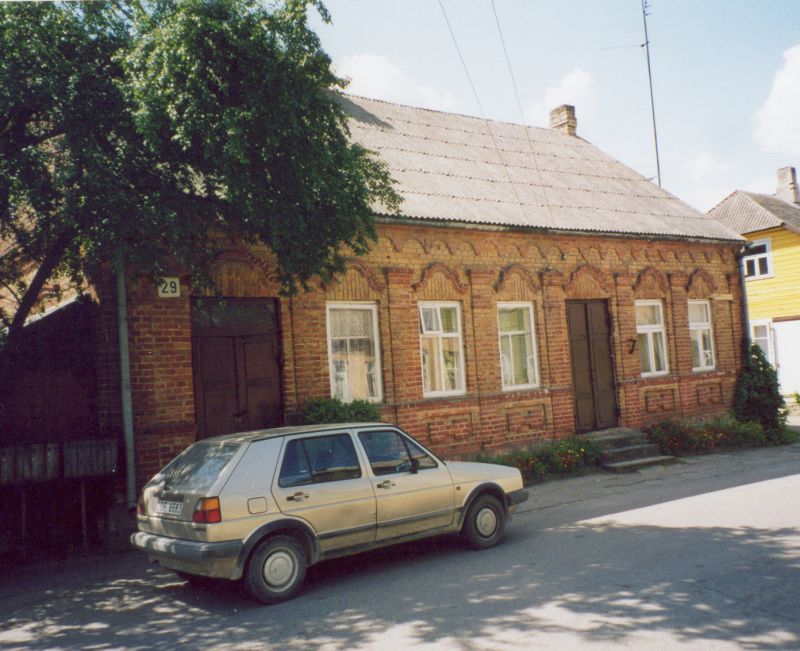 |
house 18;here lived
Čechovskis Ošeris
-or Tsjechanovskij
|
||
|
Čechovskis Ošeris. - Tsjechanovskij - was a Rabbi.
He died a natural death in 1940, during Soviet rule and before the
German occupation. He and his wife had three sons. Monty Kramer assisted at Fishel´s wedding. He had the honourable task of pole holder of the chuppa. Rivka remembers him as a kind man, sometimes pinching her cheeks and asking her how she was that day. In a part of house 18 was kept a pharmacy by Sher. He rented this part from Rabbi Čechovskis Ošeris (After the war, Shmuel Sher testified as a witness on the massacre at Morkakalnis and at the Kunisgiai forest). |
|||
|
In the stone house nr.21, lived Lieke Furmoniene.
|
|||
| Yankel, the actor rented a room in her house. |
 Yankel
Yankel |
||
|
At nr. 23, in a wooden house, lived Mera Furmonaite. She rented a room to Tachmen, an agronomist. |
|||
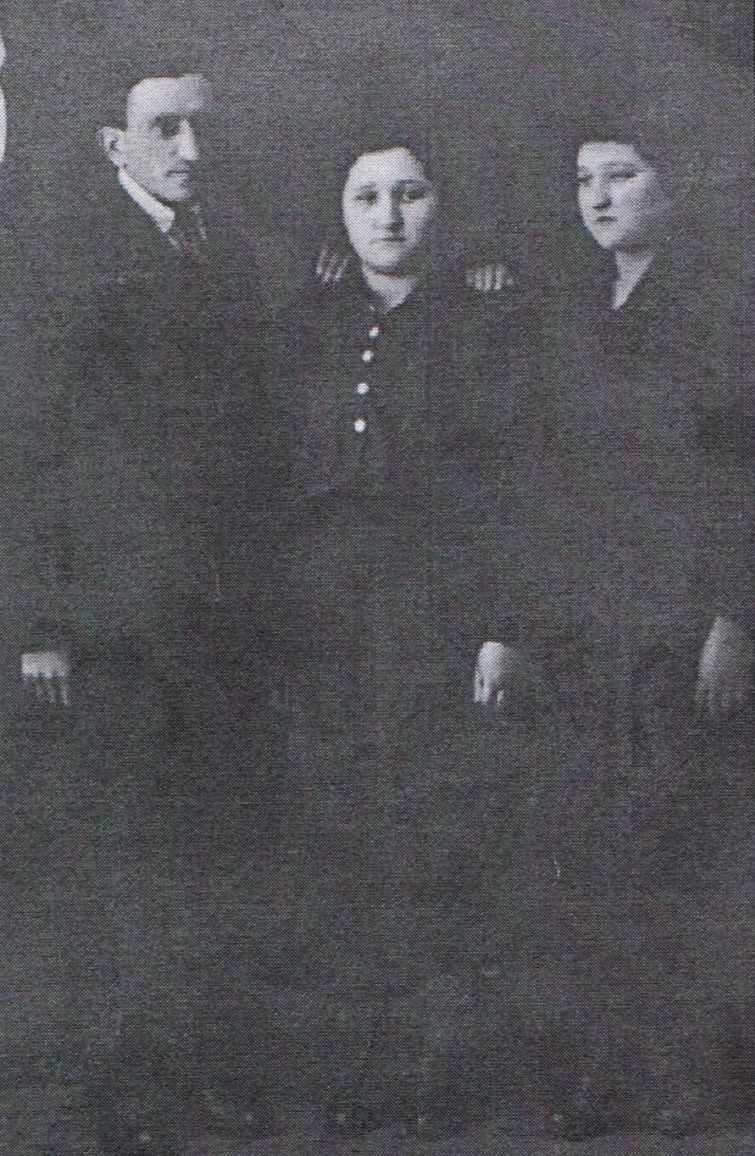 |
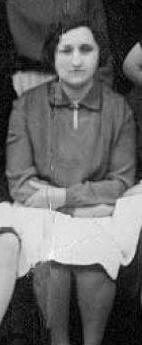
Nechama late 1920's |
||
|
|
|||
| Nechama Furmonaite is in the middle. | |||
